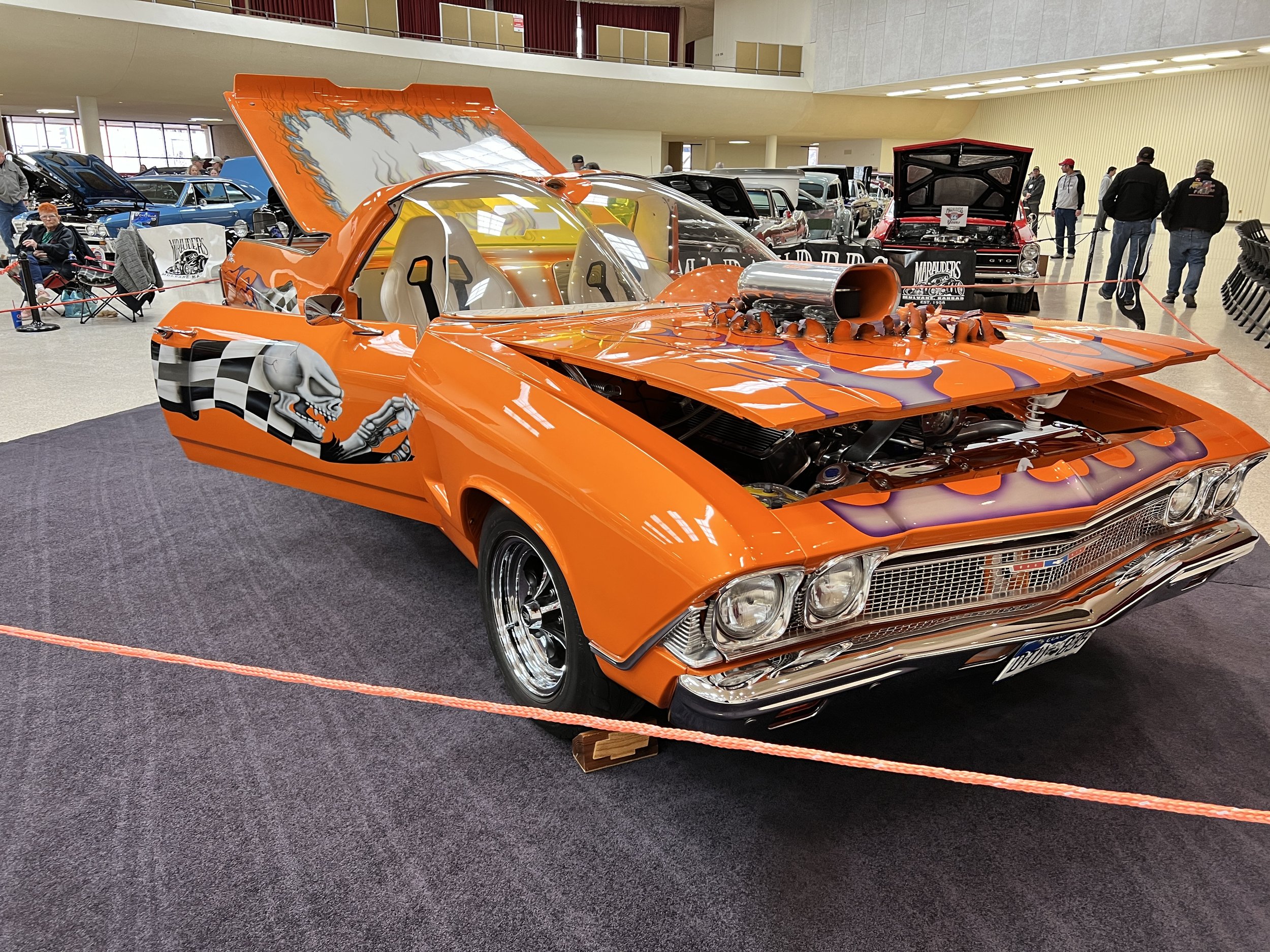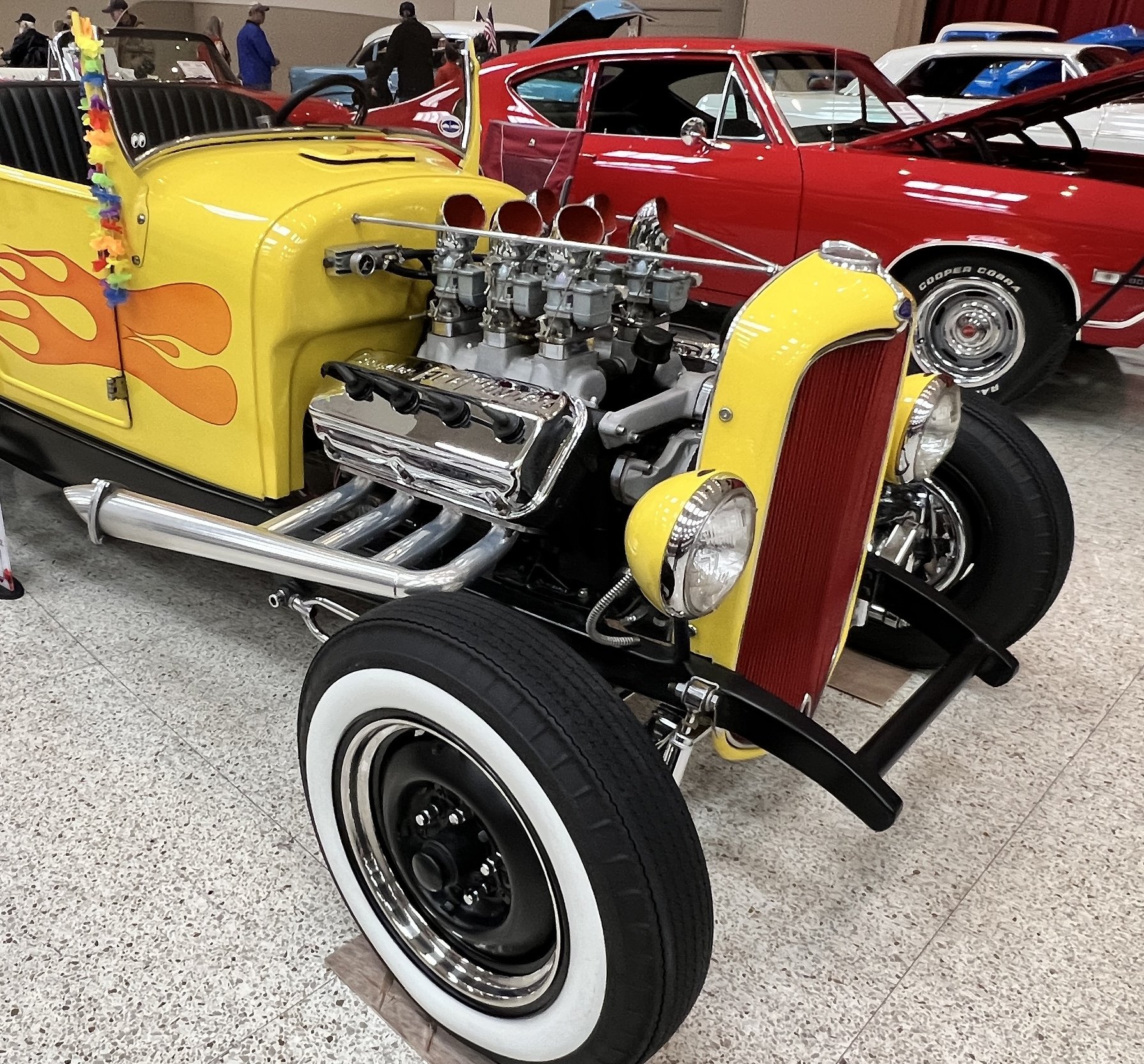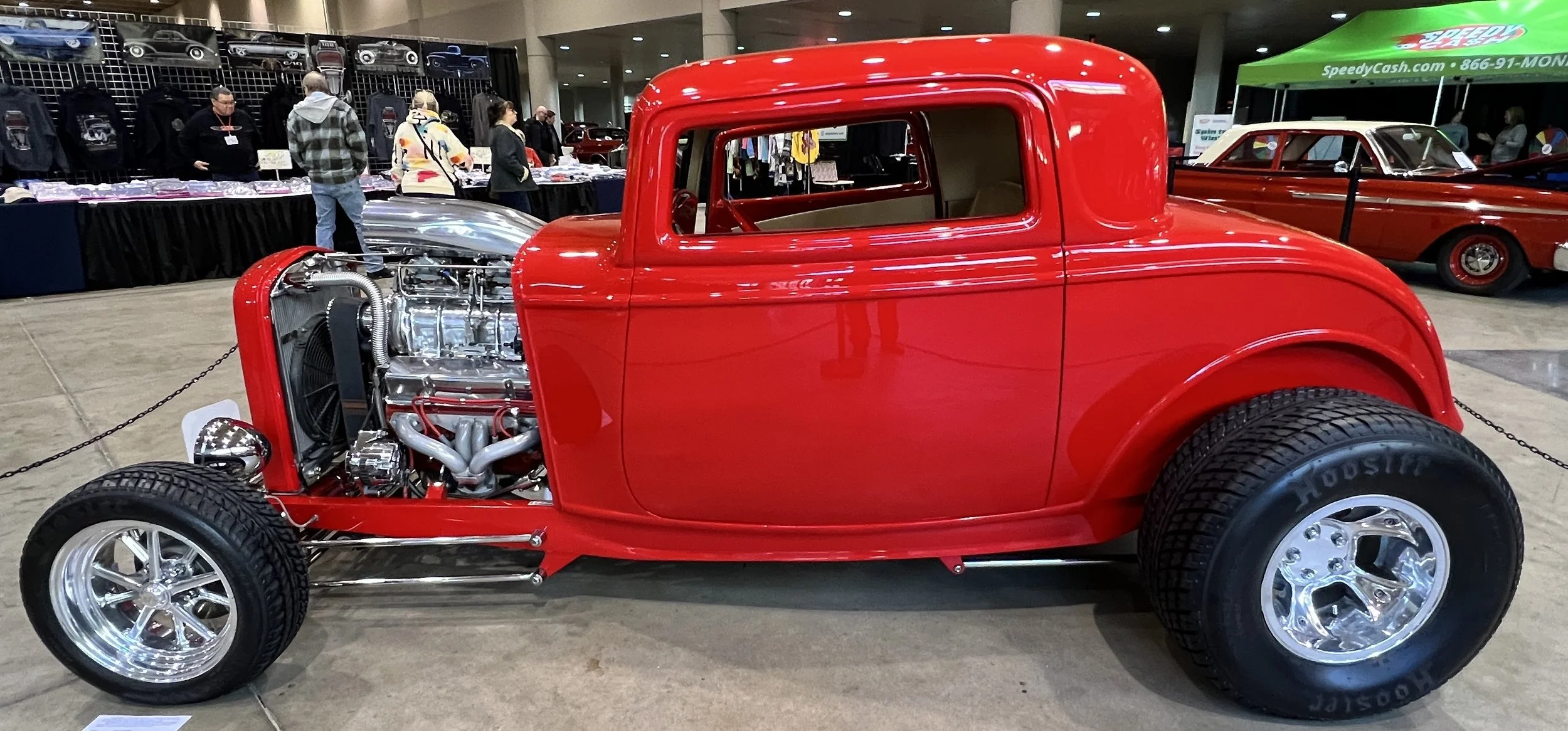The Passion of the Rod & Custom Show
The Expo Hall at Century II in the center of downtown Wichita, Kansas is empty at 8:00am. Well, not exactly empty but filled only with the bones of what is to come. Booth spaces, surrounded by black curtains, with small placards to mark each for a business. The concrete floor is taped off into an elaborate parking grid for the hundreds of classic cars that will soon occupy the space. A handful of workers and volunteers wander from one of the three or four big spaces to get things prepared for the coming onslaught of engines, tires, chrome, and gloss paint coming throughout the day.
I’m the first to arrive of the vendor class and the cars that will fill the hall haven’t started their parade in. I drop my portable table, my text2win signage, a couple of stand up banners, and a remote PA. It ain’t much but it’s what we have given that the station’s general manager would rather put up a makeshift cardboard box fort to promote the radio than spend a thin dime on anything better.
Three hours later, I return with a few more pieces of dazzle camouflage and the place is full of revving engines, gloss painted cars, and enough carbon monoxide to kill a buffalo. Each owner carefully parks his meticulously restored ride in its spot and begins polishing, positioning, and arranging for the ultimate display.
“What are you doing again this weekend?”
My friend from Chicago is credulous of my time in the heartland. I haven’t necessarily relayed my experience in glowing terms. Wichita has felt small and, in many ways artless. It is small, no question, but the art is there if you take the time to see it.
Darrel John is a 64-year old retired Navy vet. Salt and pepper hair under a logo-less brown ball cap. He sits in a lawn chair next to his masterpiece: a 1968 Super El Camino. The windshield has been retrofitted with bubble windows like the Adam West batmobile and the engine looks like it is bursting from under the hood because Darrel has peeled back the edges and painted them to look that way. The vehicle is bright orange with skulls shooting out from racing flags on the doors.
It’s beautiful and audacious and you can tell Darrel is proud as he can be to tell people the story of his finding the carcass in a junk yard and breathing life into it like Victor Frankenstein with automotive tools.
“This is the second version of this car, you know?” he boasts and moves me to a picture book on a pedestal. “We originally had a canary yellow version, that was signed by Darryl Starbird, but we crashed it. So we started over.”
“How long does it take to build out one of these?”
“Years. I think the first took me three years but the second took less.”
The remarkable thing about John’s El Camino is the detail in every inch of the thing. Also, it’s totally badass in the most American way. Like our fascination with guns, the American love of a cool car is pervasive. I’m not a big car guy (I own a Prius) but it’s hard not to appreciate the culture when surrounded by hundreds of meticulously restored reminders of those incredible rides of our past.
In high school I had a restored 1951 Chevrolet Deluxe—candy apple red, white leather seats, and a vanity plate my mom got me (BOPPER). The Bop was a beast but it was unique and cool and it was a statement in the high school parking lot filled with Cameros and Firebirds that the owner of this throwback auto was likewise unique and different.
“Darrel. Your card says you’re from New Mexico? Did you cart this car all the way from New Mexico to Kansas?”
“Yeah. We travel all over.”
“Do you get any money for this?”
“Not really. An endorsement once in a while but we spend a lot more money than we take in.”
Sounds to me like the motis operandi of millions of artists. A labor of love, of passion, of obsession. The Bukowski of Classic Cars.
The Rod & Custom show is a tradition that hails back to the 1950s. This year, as far as I can tell, there were over 1,700 of them across the United States with an estimated 50,000 rebuilt vehicles being showcased in expo halls and parking lots. Each one is a pop-up museum, art gallery, and meeting place for those who love and breathe American car culture.
“What’s the appeal for you to haul your car around the country and stick it in a place with hundreds of other cars if you’re not selling it or selling your services to restore other cars?”
“Appeal?”
“Why do you do it?”
“Son, I know what appeal means. Look around. This is a circuit of guys and gals who work hard—hard—to polish their babies up. What’re they gonna do? Leave ‘em in their garage?”
Jack Worley stands to the side of his 1926 Ford Roadster, yellow with orange flames painted across the front and along the doors. The engine is polished chrome with huge whitewall tires and a bright red grill on the front. He can’t be more than a few years older than me but insists on calling me ‘son.’
Worley began traveling across the country with his Roadster eight years ago, hitting shows in Pennsylvania, Florida, Texas, South Dakota, New York, and, of course, Kansas. He’s displayed his ride in barns, dirt lots, expo halls, and in an empty Walmart one year.
“Listen. Folks here are a family. We know about each others’ kids, aging parents, mortgages. It’s a club, right? We’re all in this exclusive club. You see the ’64 A-100? The green one?”
Off to the left is a nutty looking lime green 1964 Dodge A-100 with the back cut off to create a flatbed with the front looking like a van. It looks exactly like a life-sized Hot Wheel.
“Yeah.”
“That guy is a real asshole. Real smart ass. No one likes him much but we all love the truck so we overlook him being an asshole. Some.”
Gary and Debbie Viser brought his 1932 Ford Coupe. A striking red gloss with exposed chrome engine and two sizes of tires (regular for the front and huge, fat, wide tires for the back) it is hard to fathom that this vehicle is older than Biden.
“I found this in a car graveyard out near Burden, KS. I recognized the body because my great grandfather had the exact same car so I picked it up for $40.00.”
“How much did the restoration cost?”
Debbie jumps in. “So much money. Thousands of dollars and it took him four years to get it running.”
“It runs?”
“We drove it here from Mulvane last night.”
I spend the two days of my occupation switching from staffing the radio booth and giving away tickets and finding cool cars and chatting up the owners and the conclusion reached is that these men and women are no different than the urbane poets and musicians from Chicago, the outdoor artists in the Southwest, or the writers and storytellers I spend most of my time with. They have found an art form that speaks something deep and primal to them and have devoted years and mounds of cash to be able to simply display the results to a crowd that can appreciate the artistry.
While cars aren’t my scene, I am completely impressed with that sense of passion, obsession, and skill. I hope that as I continue to make my own art that I demonstrate the same as these cartists.


